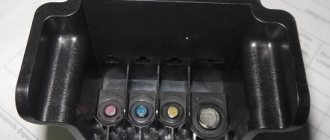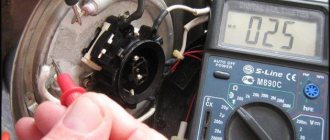It is difficult to imagine modern life without electric kettles. High heating speed, attractive appearance and low energy consumption have made it an indispensable appliance in any kitchen, both at home and in the office. This article will introduce you to the structure of a modern electric kettle and help you understand all the intricacies of its operation.
Operating principle of an electric kettle
Despite the huge selection of models, they are all designed the same and quite simply. Understanding the principle of operation, you can even repair the electric kettle yourself if the need arises.
The kettle structure is elementary:
- Frame,
- Stand,
- A heating element,
- Glass flask,
- Thermostat.
So, let's look at how this household appliance works. Cold water is poured inside the case, placed on a stand and the plug is inserted into the socket. Next, turn on the device with a button or key, which can be located either under the handle or above it, or built into the lid.
Then the heating element located at the bottom of the device begins its work. The water is heated to a boil and converted into steam, which acts on the bimetallic plates. These plates automatically turn off the electric kettle. As you can see, the mechanism is absolutely simple.
For the manufacture of the case, heat-resistant plastic or stainless steel is most often used; models with a glass case, less often ceramic, are also quite common. The disadvantages of plastic kettles include an unpleasant odor when heated and a less presentable appearance. At the same time, the metal or glass case heats up more, and if you accidentally touch it, you can get burned.
Ceramic models are heavy and break easily. The volume of the water container is usually from 1.5 to 2 liters.
The stand is a round platform with a contact in the middle. Through this contact, the heating element is connected to the electrical network. Accordingly, when you remove the kettle from the stand, you open the contacts and automatically turn it off.
An additional element may include an anti-scale filter, which is located in the spout of the kettle and is a fine mesh.
The higher the power of the kettle, the faster the water boils. The optimal power is about 2000 W.
Instructions for using the kettle
@mi-shop.com
Every electrical appliance is dangerous for humans, because... it is a direct conductor of electric current, which is detrimental to health. Therefore, according to the rules of the current legislation, along with the warranty for the electrical device, instructions for its use must be provided. However, there are general rules for using electric kettles that must be followed in all cases.
- Always make sure the flask is full; it should be filled to the maximum level. In case of overflow, the water will boil away and flood the stand, which will lead to the contacts closing.
- It is better to plug the electrical appliance into a separate outlet, otherwise other appliances connected to a common outlet may damage it.
- Do not cover the kettle with flammable objects: paper towels, oven mitts, etc.
- It is not allowed to use the kettle if the plug or wires are damaged.
- Do not remove the electrical device from the stand while it is connected to the network. Also, at this moment you cannot wash the kettle or influence it in any other way.
Types of heating elements
The main heating element of the electric kettle is a tubular electric heater (TEN). It can be done in one of the following 2 options:
- An open stainless steel spiral, which is located at the bottom of the body and is constantly in contact with water. This type of heating elements predominates in cheaper models. These devices are characterized by the formation of scale inside the housing, which must be cleaned periodically.
- A disk located inside the housing and not in direct contact with water. The advantage of this option is the absence of scale on the walls of the water container and on the heating element of the device; accordingly, these models are easier to clean. However, devices of this type belong to a more expensive category.
Electric kettle device
Electrical appliance stand
The fundamental connecting element of the power supply of an electrical appliance is the electric kettle stand. Inside the stand there are electrical contacts, the one in the center is needed for grounding, the side ones direct current to the kettle (220V).
@Electrik.info
A heating element
The efficiency of the device depends on its heating element (heating element), which is located inside the kettle at the very bottom. There are two types: curved or closed. At the boundaries of this element there must be insulated terminals that supply power to the device.
@Shop.by
Turning on an electrical appliance
Any electrical appliance has a special lever that is responsible for turning the electric kettle on/off. After pressing it, the switch supplies voltage to the heating element and activates the heating mechanism.
To protect the electric kettle from overloads and prevent short-circuiting of the electrical appliance, a thermal relay is provided. Its location is most often the handle of the kettle. Often, for convenience, the relay is combined with a switch. The relay detects power surges, overheating or short circuits and stops supplying power.
@polar.ru
Important! The electric kettle is also equipped with a thermostat that protects the heating element. If there is no water in the switched on kettle, the thermostat turns it off. It looks like a bimetallic plate that bends when heated and opens the contacts. After the temperature normalizes, the plate falls into place.
On/off indicator
Many models have an indicator indicating the status of the electrical appliance. It looks like a small light bulb located near the power button. The light comes on and stays on while the electric kettle is working and goes off immediately after it is turned off.
Electric kettle body
Material type:
- plastic;
- metal;
- ceramics;
- glass.
Important! Simple, cheaper models of electric kettles do not have a flask. Water is poured directly into the housing and heated there. New models have flasks. The flask is placed inside the body, but it does not come into contact with its walls. This creates a space that allows hot water to remain inside the appliance.
Auto shut off mechanism
All modern models of electric kettles have an automatic shut-off function. It saves many forgetful people from burning out the device and from starting a fire in the room. This function works when the device is turned on and you forget to pour water.
Its action is elementary, the body of the heating element heats up and begins to heat the bimetallic plate, when the temperature exceeds the maximum permissible value, the plate bends and opens the contacts, turning off the kettle.
Attention! If the kettle boils for a long time and does not turn off, check that the lid of the device is tightly closed.
A little history
The idea of creating such a device belongs to the American Colonel Crompton, who first demonstrated his invention at the Chicago World's Fair in 1893. The heating element was built into the kettle stand, which increased the time and energy consumption required to heat water by an order of magnitude. Due to these shortcomings, the device was unable to attract the attention of the general public.
Taking Crompton's idea as a basis, the Englishman Arthur Large improved the model by installing a heating element directly into the inner surface of the device, which reduced heating time to a minimum.
The first mass-produced electric kettle was produced in Germany at the beginning of the 20th century by AEG. Some models can still be found in modern design museums around the world.
Backlight and power indicator
Most kettles have an on indicator. It is activated when you press the power key, and will let you know if you forgot to plug the appliance into the socket or did not install the kettle on the stand properly. This function can be implemented in the form of a neon light installed in the base or power key, or in the form of an LED water light.
And finally, a piece of advice; Do not bring the water to a full boil and descale the device in a timely manner, and then the tea will delight you with its unique taste and aroma.
Subscribe to our Social networks
How it all works
In order to understand how any device works, you need to familiarize yourself with its diagram. The electric kettle circuit looks like this:
Electric current is supplied to the contacts of a special XP1 stand. Next, the current passes through the thermostat S1. From this regulator, current is supplied to the contacts of the heating element. HL – light indicator. S2 is a thermal protection switch that is not involved in the water heating process. It only works if the kettle flask is empty.
This kettle diagram is quite conventional and may differ depending on the model and the number of additional functions of the device.
In a more generalized form, the operating principle of an electric kettle consists of the sequential implementation of the following actions:
- By installing the device on a special stand, the user connects the kettle to the mains and by pressing a button activates the operation of the device. Using electric current, the heating element boils water. The maximum permissible heating temperature for such devices is 100 degrees Celsius. Due to various impurities present in tap water, this value can drop to 93-95 degrees.
- The thermostat determines the heating temperature of the water and, after reaching a certain point, automatically turns off the electricity supply to the heating element.
- If your device is set to maintain temperature mode, the kettle will constantly heat the water after it has cooled to a certain temperature.
Many modern models are designed on the principle of a thermos: the inner flask is insulated from the outer body by an “air cushion”, which helps maintain a high temperature for a longer time.
When choosing an electric kettle, you should pay attention to the material from which it is made. Devices with a metal base take the longest to heat up and use a lot of energy. Ceramic teapots retain heat for a long time and have a higher heating rate.
Ceramic teapot Rolsen RK-1008 C
Automatic kettle switch-off system
To avoid overheating or even fire, every modern electric kettle has a simple system
:
- There is a bimetallic plate inside the kettle.
- It consists of two metals, each of which changes its shape under the influence of temperature.
- But changes begin to occur at different indicators, so when the boiling temperature is reached, the shape of the plate changes.
- It bends inward, touches the contacts and ensures that the automatic system operates.
- In manual mode, you can turn off the kettle by pressing the button and using the same principle, but with minimal effort on the part of the person.
Now you can remember the school physics course and say that the boiling point can vary depending on the pressure indicators
.
The kettle does not turn off
If after boiling the water the device does not turn off and continues to heat the liquid, this can lead to combustion of the heating element. There are several reasons for this malfunction. Shutdown occurs at the moment when the steam rises due to boiling and reaches the channel through which it passes to the thermostat. The shutdown may not occur due to a broken lid, a channel clogged with scale, or a breakdown of the thermostat itself. But if the first reasons can be dealt with using special means or traditional methods for removing plaque, to repair the thermostat it is necessary to remove the bottom cover of the housing and completely disassemble the device in order to replace it.
Automatic kettle switch-off system
To avoid overheating or even fire, every modern electric kettle has a simple system
:
- There is a bimetallic plate inside the kettle.
- It consists of two metals, each of which changes its shape under the influence of temperature.
- But changes begin to occur at different indicators, so when the boiling temperature is reached, the shape of the plate changes.
- It bends inward, touches the contacts and ensures that the automatic system operates.
- In manual mode, you can turn off the kettle by pressing the button and using the same principle, but with minimal effort on the part of the person.
Now you can remember the school physics course and say that the boiling point can vary depending on the pressure indicators
.
Overheat protection system
If automatic shutdown does not work for some reason, the built-in overheating protection system is activated. It works as follows: the heating element continues to heat up, but at the same time the process of melting a special pin begins, one end of which rests against the body of the heating element. The pin gradually decreases in size and opens the contact.
And everything would be fine, but such a mechanism can only work once, after which the kettle stops working.
Troubleshooting
To determine the cause of equipment malfunction, it is advisable to have an understanding of the design of an electric kettle and some skills in working with electrical measuring instruments. In particular, diagnostics may require disassembling the kettle and examining its individual elements. Let's consider the optimal order of actions when performing these operations.
Disassembling the electric kettle
Before disassembling the kettle, it is recommended to read the operating instructions. Some manufacturers provide descriptions of the procedure for disassembling the device - this significantly speeds up and facilitates the disassembly process. But most often there is no such description. Features of disassembly of different models, especially from different manufacturers, may differ significantly, but there are general recommendations for this process. Let's list them.
- To disassemble the device, you need to unscrew the fastening screws, first of all on the bottom of the kettle from the outside. Sometimes they are covered with plastic plugs. In this case, you will have to pry off the plugs and remove them using some pointed object.
- Most often, screws are used for a Phillips screwdriver, but sometimes manufacturers use screws for a special double-pronged screwdriver. If you don’t have such a screwdriver at hand, you can try to remove the screw with thin tweezers or side pliers.
- Often, parts of an electric kettle are fixed not only with screws, but also with latches. It is convenient to free yourself from such fasteners using a thin flat-head screwdriver. Please note that in some models, external elements are attached exclusively to latches.
Ringing elements
Using this procedure, it is determined whether the cause of the kettle breakdown is a broken electrical circuit, or whether another reason needs to be looked for. A tester (multimeter) operating in voltmeter mode is used as a working tool. The tester checks the power cord, contact groups and other elements available for testing. If it turns out that the electrical circuit is broken, you will have to disassemble the kettle with your own hands and continue identifying the internal elements (terminal blocks, heating element, power button contacts), and then either restore the integrity of the circuit or clean the junctions of the elements from oxide.
Checking the thermostat
A thermopot is a device with a thermostat, similar to an electric kettle, but capable of heating water to a certain temperature (up to boiling point) and maintaining this temperature as long as necessary. Another feature of the thermopot is that water is drained from the container using a built-in pump, which can be either mechanical or electric. The design of a thermopot is more complex than that of an electric kettle, but testing of this device is carried out according to the same principles. A thermostat is added to the number of elements being checked. The test begins by ringing the contacts located on the base (stand), while one probe of the tester is connected to the pin of the power cord plug, and the other touches the contacts in turn. Next, the remaining elements available for verification are called.
When to contact a specialist
Experts do not advise starting to repair an electric kettle on your own in the following situations:
- when a person does not have the necessary knowledge and practical experience in this matter;
- when a breakdown is observed in the thermostat;
- in a situation where a crack or chip has formed in the body of the kettle;
- when it is necessary to change or repair the heating element in a model with a closed type of heater.
Electric kettle repair
Thus, premature shutdown of an electric kettle even before the water boils can be caused by a large amount of scale on its walls and heating element or a breakdown when the thermostat or fuse fails. Other reasons are chips and cracks on the case or poor fixation of the heating element inside the device. If scale can be cleaned at home, then in other situations it is better to contact a service center and have the electric kettle repaired.
Video about turning off the kettle
What kind of damage can the kettle be returned to the seller?
If the purchased product does not meet the declared quality or malfunctions in its mechanisms are identified during operation, according to the Law on the Protection of Consumer Rights, the product can be returned to the seller and get a refund. To do this, certain conditions must be met.
- — the kettle has not been used, its appearance, factory seals and labels, as well as its presentation remained completely intact
- - availability of a sales receipt or other document evidencing the purchase (in the absence of such documents, it is possible to refer to the testimony of witnesses)
- — on the day of contact there is no similar replacement product available for sale
- — satisfaction of the request for the return of money must occur no later than 10 days from the date of presentation
- — you must have a civil passport with you to draw up a certificate of return of the kettle.
If the purchased kettle is under warranty, its repair can only be carried out in warranty workshops, the list of which is given in the warranty card. Independent disassembly of the device and an attempt to eliminate the malfunction entails termination of the manufacturer’s warranty obligations.
A simple conclusion follows from this. It makes more sense to use the warranty than to try to fix the kettle yourself. There is no point in hoping that the workshop will “not notice” any traces of an autopsy. For a professional who repairs household appliances every day and for many years, one glance is enough to determine whether the kettle has been disassembled or not. In addition, there are various tricks on the part of the manufacturer that are aimed at avoiding such situations. They are not visible to the eye, but are clear enough to be used to determine (and prove) the fact of unauthorized disassembly.
All defective goods are subject to return or exchange, at the request of the buyer. The only exceptions may be complex technical goods that are subject to examination for manufacturing or warehouse defects. The teapot, of course, does not fall into this category.
If controversial issues arise, the seller is obliged to conduct an expert examination of the goods at his own expense. The buyer has the right to be present during the examination. If, as a result of the examination, it is proven that the teapot (or other product) is defective due to the fault of the buyer, then he will be obliged to reimburse all expenses for the examination.
Disassembling the stand
Before you begin self-repair, you need to make sure that the device is disconnected from the network. So, the first thing you need to do is turn the stand over and unscrew all the bolts that are present there. If this is a disk model, then there are three bolts at the bottom that are unscrewed with a Phillips screwdriver. Then the lower part of the structure is removed and the system with all the elements appears in front of you. It is easily detached from the body.
How to disassemble the stand
We disassemble the old-style stand. First, turn it over, unscrew all the bolts, and disconnect the lower part from the upper. After which all elements will be publicly available.
As you can see, disassembling the device is quite easy. However, you should never rush, as there may be some plastic latches present that the manufacturer decided to install to improve the quality of the connection.
How to make an electric kettle directly without a power button
The cost of a new key or bimetallic plate may be too high in relation to the price of the electric kettle itself. In this case, you can do it by connecting directly without an enabling mechanism.
Important! The electric kettle will turn on when connected to an electrical outlet, and turn off when removing the plug from the outlet.
To connect directly you need:
- disassemble an electrical appliance;
- disconnect the contacts;
- connect and twist the ends of the wires together;
- secure the contacts to each other with insulating tape;
- Assemble the electric kettle, securing the handle with a screw.
Replacing the heating element: the electric kettle does not turn on
A burnt heating element is the most common cause of device failure. It can happen for many reasons:
- constant overheating of the heating element;
- network drop;
- the presence of a large amount of scale.
Regardless of the model, repairing an electric kettle yourself begins with diagnosing and checking for other reasons why it may not turn on. First of all, you need to check the socket itself, if everything is in order, then check the cord for integrity, and only then proceed to disassemble the case.











